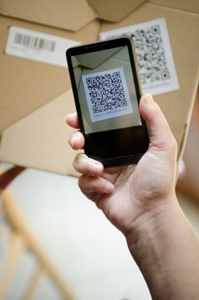Editor's note: The following guest editorial is reprinted with permission from the Shopatron blog. For more information on Shopatron, see the bottom of this page.
UPC codes may be one of the first casualties in a series of readjustments prompted by the mobile web’s effect on retail shopping. Why, you ask?
Let me tell you the story…
At our client conference last year, we talked with a retailer from the oldest snowsports store in the USA. He voiced concerns about how the web was affecting his business—specifically when customers pull out their phones and scan bar codes in his store. But can you blame them? If a customer is going to lay down a cool thousand for a new pair of sticks, you can’t really fault them for wanting to make sure they are getting a fair deal and a good product. On the other hand, we understand the retailer’s frustration with having to compete with online retailers even when he has the customer already standing in his store.
This subject got a little hotter this holiday season, thanks toAmazon. The company prompted an uproar over their new Price Compare app by offering shoppers $5 off for comparing in-store product prices using the app and then buying the product online. In this case, retailers rallied together against Amazon for trying to steal their in-store shoppers. But this surely will not be the last controversy surrounding this topic, with some, like Forbes.com, arguing that apps like these are the future of retail. And they may be right.
But this begs the question: do retailers need these UPC codes that are now causing them so much trouble?
UPC codes were initially designed to help retailers (originally grocers) handle pricing and streamline the checkout process. They were beautifully simple, effective and revolutionary in their time. They just needed to be scanned at checkout and the customer was on his way. They were also shared “universally” by all retailers, simplifying operations for manufacturers.
But, as stated above, that convenience is fast becoming a thorn in retailers’ sides. Customers are scanning bar codes with their phones, comparing pricing and sometimes buying from a competing website right from their phone while standing in the store aisle. And it’s not just Amazon convincing them this is a good thing. There are several apps and websites dedicated to this practice. So, for retailers, all that effort to drive customers into their store is wasted, and they are understandably not happy about it (who can blame them?).
But if universal bar codes are now “bad,” what will replace them?
Some stores like Walmart and Best Buy have already started to battle this comparison trend. Their strategy is to sell product model numbers for some items, like TVs or appliances, that are only available in their stores, limiting shoppers’ opportunity to definitively compare pricing. But it is unlikely that manufacturers will supply unique product model numbers to any but their largest retailers. So this solution is limited to a chosen few.
Maybe the tentative underdog, QR codes, will find a niche here, allowing retailers to replace “universal” bar codes with customized product information and reviews that add value and help close the sale in the store. Whatever the solution, we feel pretty confident that retailers will find a way to flummox the price comparison apps and websites that “borrow” from local retailers what they can’t offer themselves—local availability and customer support—to nab the sale right in the retail shop.
Ultimately, we believe these apps are bad for retail. Not because the pricing information shouldn’t be public and accessible to customers, but because they put too much emphasis on price, which is only one aspect to consider when purchasing. Shoppers need other things in the presale experience: product advice, local availability and convenience. It’s hard to purchase with confidence from a helpful retailer who provides these services when you are encouraged at every turn to make sure you are getting the best price, even if it only means saving a couple bucks. It’s causing shoppers to forget the value and convenience provided by their local brick-and-mortar shops. And remember, without those shops they likely wouldn’t know which product they wanted to buy in the first place.
In our opinion, local retailers should flank this threat with a bump in customer service and store associate training. The human touch, after all, will always be the gold standard.
About Shopatron (provided by company): Founded in 2001, Shopatron is the only eCommerce solution in the world that can drive more online sales while, at the same time, increasing a company’s sales through the retail channel. Working with over 1,000 brands and 18,000 retail partners across more than 35 industries, Shopatron offers an innovative and flexible approach to eCommerce that matches the unique needs of branded manufacturers and multi-channel retailers.
With Shopatron's eCommerce solution for brands, Coex Freedom, manufacturers sell on their website and send orders to their retail partners for fulfillment. This solution eliminates channel conflict, builds retailer relationships, grows distribution and increases overall sales for the brand. Shopatron’s solution for multi-channel retailers, Coex Private, allows retailers to fulfill orders from all inventory centers, including both retail stores and distribution centers. Shopatron's distributed order management model also enables in-store pickup to drive foot traffic into brick-and-mortar locations for additional services and add-on sales.
Shopatron clients include top brands such as Louisville Slugger, Suzuki, Polaroid, Mizuno, Ducati, JL Audio, American Tire Distributors and Sport Chalet. The company is headquartered in San Luis Obispo, Calif.
Editor's note: Shopatron's bike industry clients include Ritchey, Thule, Giant, Louis Garneau and many others.


